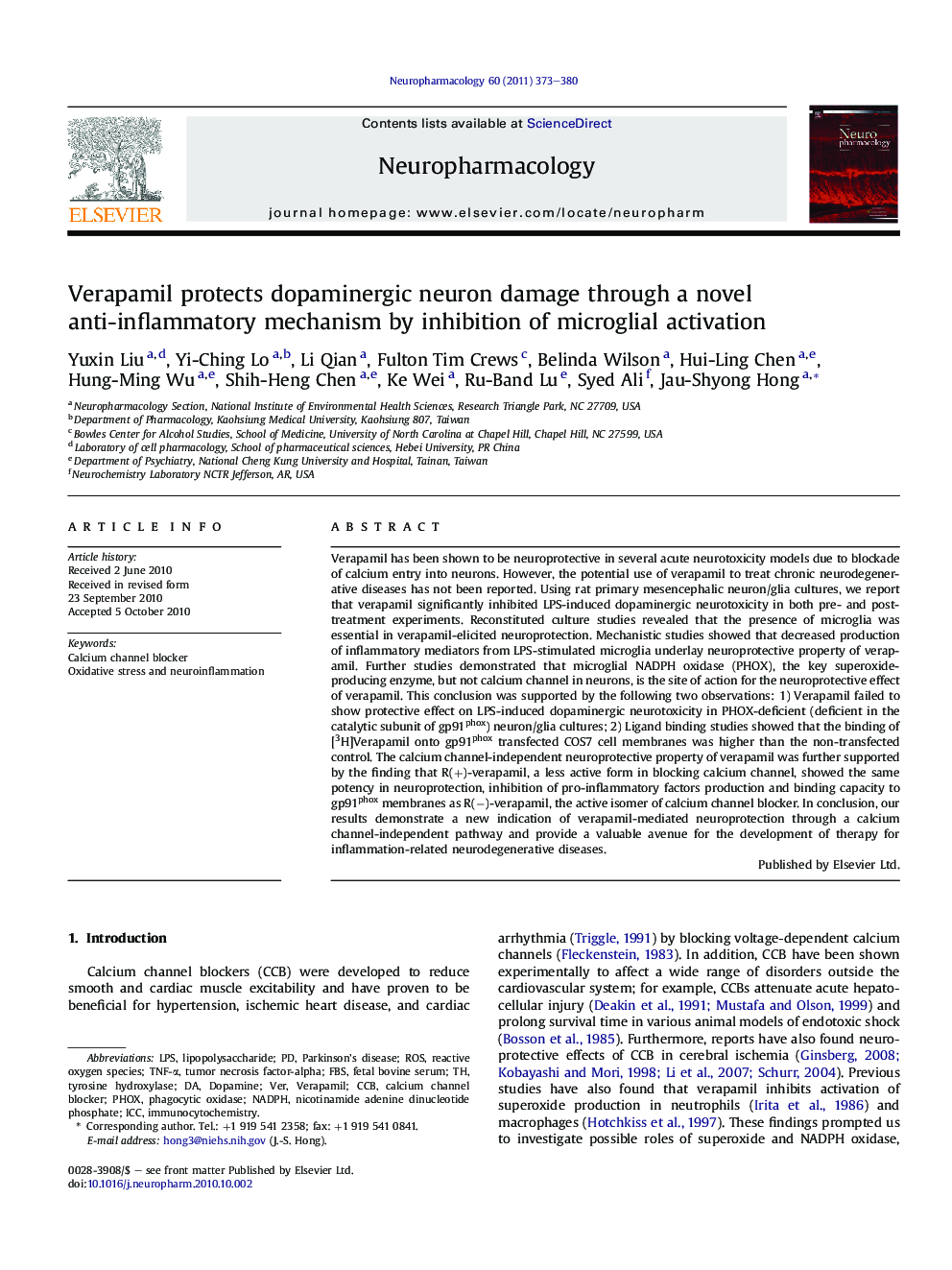| Article ID | Journal | Published Year | Pages | File Type |
|---|---|---|---|---|
| 5816012 | Neuropharmacology | 2011 | 8 Pages |
Verapamil has been shown to be neuroprotective in several acute neurotoxicity models due to blockade of calcium entry into neurons. However, the potential use of verapamil to treat chronic neurodegenerative diseases has not been reported. Using rat primary mesencephalic neuron/glia cultures, we report that verapamil significantly inhibited LPS-induced dopaminergic neurotoxicity in both pre- and post-treatment experiments. Reconstituted culture studies revealed that the presence of microglia was essential in verapamil-elicited neuroprotection. Mechanistic studies showed that decreased production of inflammatory mediators from LPS-stimulated microglia underlay neuroprotective property of verapamil. Further studies demonstrated that microglial NADPH oxidase (PHOX), the key superoxide-producing enzyme, but not calcium channel in neurons, is the site of action for the neuroprotective effect of verapamil. This conclusion was supported by the following two observations: 1) Verapamil failed to show protective effect on LPS-induced dopaminergic neurotoxicity in PHOX-deficient (deficient in the catalytic subunit of gp91phox) neuron/glia cultures; 2) Ligand binding studies showed that the binding of [3H]Verapamil onto gp91phox transfected COS7 cell membranes was higher than the non-transfected control. The calcium channel-independent neuroprotective property of verapamil was further supported by the finding that R(+)-verapamil, a less active form in blocking calcium channel, showed the same potency in neuroprotection, inhibition of pro-inflammatory factors production and binding capacity to gp91phox membranes as R(â)-verapamil, the active isomer of calcium channel blocker. In conclusion, our results demonstrate a new indication of verapamil-mediated neuroprotection through a calcium channel-independent pathway and provide a valuable avenue for the development of therapy for inflammation-related neurodegenerative diseases.
Research highlights⺠Verapamil significantly inhibited LPS-induced dopaminergic neurotoxicity. ⺠Inhibition of microglia underlay neuroprotective property of verapamil. ⺠Microglial NADPH oxidase but not calcium channel in neurons is the site of action. ⺠This study shows a potential indication of verapamil for neurodegenerative diseases.
